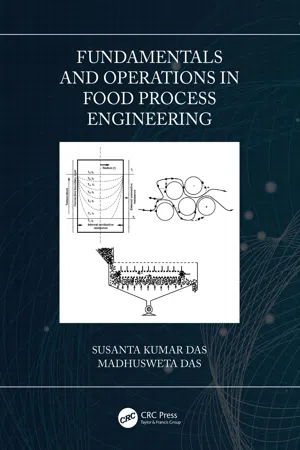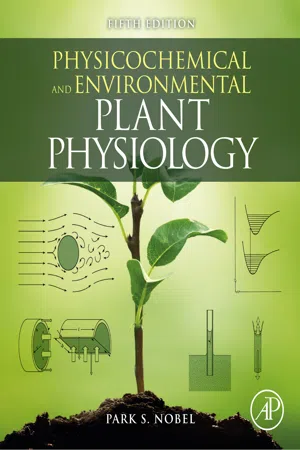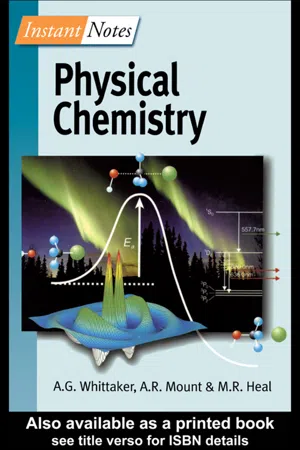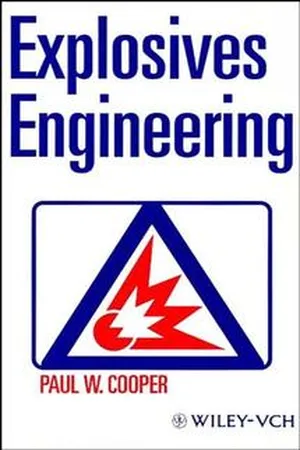Chemical Potential Ideal Gas
The chemical potential of an ideal gas is a measure of the potential energy per particle in the gas. It represents the tendency of the gas to move or react in a particular direction. In an ideal gas, the chemical potential is directly related to the pressure, temperature, and composition of the gas.
6 Key excerpts on "Chemical Potential Ideal Gas"
- eBook - ePub
Biomolecular Thermodynamics
From Theory to Application
- Douglas Barrick(Author)
- 2017(Publication Date)
- CRC Press(Publisher)
...These partial molar quantities are intensive analogs of quantities such as energy, volume, and heat capacity, and provide a fundamental expression chemical reactivity. Of particular importance is the partial molar Gibbs free energy, referred to as the “chemical potential.” In Chapter 4, we developed entropy as a thermodynamic potential to describe the direction of spontaneous change. The entropy acts as a thermodynamic potential as long as a system is isolated, that is, when there is no work, no heat flow, and no material exchange between system and the surroundings. While this is a useful way to think about the thermodynamics of the universe (where, by definition, there is no surroundings with which to interact), systems studied in the laboratory are not isolated from their surroundings (Figure 5.1A). Figure 5.1 Laboratory and biological systems at constant pressure and temperature. (A) A typical laboratory sample containing a solution of large and small molecules in various states of conformation, assembly, and reaction. The sample is open to atmospheric pressure, so it can expand and contract while maintaining constant p, and has a resistive heater and/or heat sink that can maintain constant sample temperature. The distribution of various molecular species can be measured using devices such as light sources and detectors. (B) Living biological systems. Left, a bacterial cell; middle, eukaryotic cells in a culture dish; right, animals and a plant. In all three cases, temperature and pressure are usually constant (or vary slowly compared to processes of interest). In addition, material (and in one case, light) is exchanged among these living systems and their surroundings. Typically, laboratory systems are held at constant temperature and pressure (partly because such conditions are easy to achieve, requiring no thermal or mechanical insulation), which allows heat to flow and work to be done as a result of from volume change...
- Susanta Kumar Das, Madhusweta Das(Authors)
- 2019(Publication Date)
- CRC Press(Publisher)
...For standard state of reference, it is represented as μ i o. Physically, it represents a change in free energy per mole of component i added to or removed from the system. Thus, the chemical potential is a driving force in the transfer of material from one phase to other and provides the basic criterion of phase equilibrium. At constant temperature and pressure, Eq. F.2b can be rewritten as (d G) P, T = ∑ μ i d n i (F.2c) Now, we imagine that at constant pressure and temperature, all the constituents in a multi-component system are increased in the same proportion (Δx). Hence, d n 1 = n 1 Δ x ; d n 2 = n 2 Δ x ; d n i = n i Δ x (F.2d) Since G is an extensive property, it will also increase by the same amount, GΔx. It means d G = G Δ x (F.2e) Applying these relations in Eq. F.2c, we. have d G = μ 1 n 1 Δ x + μ 2 n 2 Δ x + μ 3 n 3 Δ x + ⋯ + μ i n i Δ x (F.2f) or G Δ x = μ 1 n 1 Δ x + μ 2 n 2 Δ x + μ 3 n 3 Δ x + ⋯ + μ i n i Δ x (F.2g) Hence, G = μ 1 n 1 + μ[--=PLGO-SEPARATOR=--. ]2 n 2 + μ 3 n 3 + ⋯ + μ i n i = ∑ μ n (F.2h) A complete differentiation of this equation. gives d G = (μ 1 d n 1 + μ 2 d n 2 + μ 3 d n 3 + ⋯ + μ i d n i) + (n 1 d μ 1 + n 2 d μ 2 + n 3 d μ 3 + ⋯ n i d μ i) (F.2i) Subtracting Eq. F.2c from Eq. F.2i gives 0 = n 1 d μ 1 + n 2 d μ 2 + n 3 d μ 3 + ⋯ n i d μ i = ∑ n d μ (F.2j) and d G = μ 1 d n 1 + μ 2 d n 2 + μ 3 d n 3 + ⋯ + μ i d n i = ∑ μ d n (F.2k) These three relations (i.e. Eqs. F.2h, F.2j and F.2k) are known as Gibbs–Duhem relations. Consider a component ‘i’ present in two distinct phases 1 and 2 in a closed system at equilibrium, constant temperature and pressure with molal free energies G 1 and G 2, respectively. Δn moles of ‘i’ is transferred across the phases. The net change in free energy of the system (dG) at equilibrium is zero...
- Park S. Nobel(Author)
- 2020(Publication Date)
- Academic Press(Publisher)
...The chemical potential is actually the partial molal Gibbs free energy with respect to that species; that is, μ j equals (∂ G / ∂ n j) T, P, E, h, n i (Eq. IV.9 in Appendix IV), where the subscripts on the partial derivative indicate the variables that are held constant. We must consider the Gibbs free energy of an entire system to determine the chemical potential of species j. In turn, G depends on each of the species present, an appropriate expression being G = ∑ j n j μ j (6.1) where n j is the number of moles of species j in some system, μ j is the chemical potential of species j (Eq. 2.4), and the summation is over all of the species present (Eq. 6.1 is derived in Appendix IV). The Gibbs free energy is expressed relative to some arbitrary zero level—the arbitrariness in the baseline for G in Equation 6.1 is a consequence of the μ j ∗ included in each μ j (Fig. 6-1). The Gibbs free energy as represented by Equation 6.1 is very useful for applying free energy concepts to bioenergetics. 6.1A. Chemical Reactions and Equilibrium Constants From the thermodynamic point of view, we are interested in the overall change in free energy for an individual reaction—or perhaps a sequence of reactions. Let us consider a general chemical reaction for which A and B are the reactants and C and D are the products: a A + b B ⇌ c C + d D (6.2) where a, b, c, and d are the numbers of moles of the various species taking part in the reaction. The steps to develop a useful expression for the change in Gibbs free energy for this chemical reaction are as follows: Step Eq...
- eBook - ePub
- Gavin Whittaker, Andy Mount, Matthew Heal(Authors)
- 2000(Publication Date)
- Taylor & Francis(Publisher)
...Therefore, the total Gibbs free energy, G, of a mixture of species of n A moles of A, n B moles of B and n C moles of C is given by or, more generally,, for all the species, i, in the system. As with all other partial molar quantities, the chemical potential of a pure substance is generally not the same as the chemical potential of that substance in a mixture. This is due to differences in the molecular arrangement, which produce differences in the molecular interactions, in the two systems. Generally, these differences in chemical potential for any species i at any temperature, T, are given by its activity, a i, as: Where is the standard chemical potential of the species, or the chemical potential when the activity is unity. For a perfect gas (see Topic A1), the activity is given by where p i, is the partial pressure of the gas, i, (see Topic A1) and p θ is the standard pressure of 1 atmosphere. Essentially, the more chemical potential the molecules in a perfect gas have (the more Gibbs free energy) the faster they move and the more pressure they exert. This is a relatively simple expression, which is a consequence of the fact there are no intermolecular interactions in perfect gases. Generally, in all systems, the activity expression allows the change in the chemical potential (the partial molar Gibbs free energy) of any species to be calculated when its molecular environment is changed from standard conditions. However, for more complicated systems which have significant intermolecular interactions, such as ions in solution (see Topics E1 and E2) or non-ideal mixtures of liquids (see Topic D2), the activity relationship is more complicated, reflecting the greater complexity introduced by these interactions. At equilibrium, the change in Gibbs free energy for the reaction is zero (see Topic C1) and hence the Gibbs free energy of reactants and products are equal...
- eBook - ePub
- Jacob N. Israelachvili(Author)
- 2010(Publication Date)
- Academic Press(Publisher)
...Strictly, Eqs. (2.9) and (2.10) are exact only when molecules mix ideally in both regions—that is, for a dilute system. If there are many different regions (phases or states) in a system, each with different energies μ i n, but at the same temperature and pressure, then the condition of equilibrium is simply an extension of the Eq. (2.10) to all the phases—that is, (2.11) Thus, there will be a flow of molecules between all the different states of the system until Eq. (2.11) is satisfied, that is, equilibrium is reached when the value of μ i n + KT log X n is uniform throughout. The quantity μ is known as the chemical potential, and it gives the total free energy per molecule; it includes the interaction energy as well as the contribution associated with its thermal energy. The k log X n factor gives the (ideal) entropy of confining the molecules and is known by a variety of names: the ideal gas entropy, the configurational entropy, the entropy of confinement, the ideal solution entropy, the translational entropy, the entropy of dilution, and the entropy of mixing. The dimensionless concentrations X n are usually expressed as mole fractions or volume fractions. For a pure solid or liquid, X 1 = 1, so that log X 1 = 0. 2.4 The Distribution of Molecules and Particles in Systems at Equilibrium The requirement of equality of the chemical potentials, as expressed by Eq. (2.11), provides a very general and useful starting point for formulating conditions of equilibrium within a molecular framework and may be applied to both simple and complex multicomponent systems—for example, electrolyte solutions, discussed in Part II, and “self-assembling” molecular structures such as surfactant micelles and lipid bilayers, discussed in Part III. In this chapter we shall consider some simpler cases. Suppose we wish to calculate how the number density ρ of molecules in the earth’s atmosphere varies with altitude z...
- eBook - ePub
- Paul W. Cooper(Author)
- 2018(Publication Date)
- Wiley-VCH(Publisher)
...A part of this energy is contributed by the translational motion of the separate molecules and is particularly significant in gases where translational motion is nearly unrestricted in contrast to the situation in liquids and solids. Internal energy also includes the rotational motion of molecules and of groups of atoms that are free to rotate within the molecules. It includes the energy of vibration between the atoms of a molecule and the motion of electrons within the atoms. These kinetic portions of the total internal energy are determined by the temperature of the substance and by its molecular structure. The remainder of the internal energy is present as potential energy resulting from the attractive and repulsive forces acting between molecules, atoms, electrons, and nuclei. This portion of the internal energy is determined by molecular and atomic structures and by the proximity of the molecules and atoms to one another. At the absolute zero of temperature all translational energy disappears, but a great reservoir of potential energy and a small amount of vibrational energy remain. The total internal energy of a substance is unknown, but the amount relative to some selected temperature and state can be accurately determined. The crystalline state and hypothetical gaseous state at absolute zero temperature are commonly used as references for scientific studies, whereas engineering calculations are based on a variety of reference conditions arbitrarily selected. 7.4 Energy in Transition: Heat and Work In reviewing the several forms of energy previously referred to, it will be noted that some are capable of storage, unchanged in form. Thus, the potential energy of an elevated weight or the kinetic energy of a rotating flywheel is stored as such until by some transformation they are converted, in part at least, to other forms. Heat represents energy in transition under the influence of a temperature difference...





